Push Polling in Mansfield Gas Fight Highlights Biggest PR Industry Offensive Since Denton
 (Mansfield) — Residents in this Fort Worth suburb seeking a more modern approach to gas industry regulation seemed to have hit a raw Barnett Shale nerve.
(Mansfield) — Residents in this Fort Worth suburb seeking a more modern approach to gas industry regulation seemed to have hit a raw Barnett Shale nerve.
A decision last month by the city council to postpone permitting of a giant new multi-well and compressor facility in Mansfield, pending development of a new gas ordinance, has spurred the largest and most expensive industry PR offensive since the fight over the Denton fracking ban vote last November, including a city wide “push polling” campaign that contain ad hominem attacks on local advocates.
“I guess we should be flattered that our efforts have attracted so much attention from the national gas organizations,” said Tamera Bounds, one of the targets of the industry’s efforts. “But the fact is, this is a matter for Mansfield residents, and over the course of the last nine months as we’ve been working with the city council on drafting a new drilling ordinance, to our knowledge not one Mansfield resident has addressed the council in favor of the old ordinance. Now, at the last minute, these national trade groups show up and pretend their speaking on behalf of our local interests. They aren’t.”
Although Bounds group began meeting in June 2014, and a city wide forum on a new gas ordinance was held in December, it’s the unanimous January 26th tabling of Edge Resources’ huge, 34 well, compressor, dehydrator, and storage tank complex by the Mansfield city council on its third and final reading that apparently has the industry worried they’re losing their influence in a town so deep in the Barnett Shale.
On the eve of the first reading of the newly drafted ordinance this coming Monday, Mansfield residents are getting calls from a number registered to The Woodlands-based Promark firm asking them to take part in its “survey” on Mansfield drilling issues. Promark is a notoriously partisan company with a pockmarked reputation. In 2004, Promark’s polling tactics were investigated by the American Association of Public Opinion Research for unethical polling practices. According to the AAPOR, push polls are “an insidious form of negative campaigning, disguised as a political poll. 'Push polls' are not surveys at all, but rather unethical political telemarketing — telephone calls disguised as research that aim to persuade large numbers of voters and affect election outcomes, rather than measure opinions.”
That certainly describes the line of attacks that were posed as questions asked during the company’s Mansfield calls, including “If the ordinances are passed, did you know that the City taxes could be raised? Knowing this, would you support a new ordinance?” and “If ordinances are passed, did you know that schools would loose a lot of funding? Did you know that property taxes will go up?”
Despite these scare tactics disguised as a “survey,” no part of the ordinance would affect current facilities. It’s aimed only at new permits. Residents have requested better monitoring and enforcement as well as a more protective 1500-foot setback from homes, schools and other “protected uses” to replace the 600-foot setback requirement established in 2008.
Perhaps most disturbing are the personal nature of some of the push polling questions. For example it asks whether respondents “agree that the clean air activists are a nuisance to the city?” and then whether Mansfield Gas Well Awareness Group leader Bounds is “credible, somewhat credible, or not credible”
Besides Promark’s push polling, which no trade group has yet claimed responsibility for, industry representatives are also suddenly showing up in Mansfield trying to drum up supporters among the local business community.
This Friday, Austin-based Luke Legate of the “Joint Association of Oil and Gas Education Initiative” is speaking to the Mansfield Business Association. The Initiative is a state wide industry trade group alliance that includes the Texas Oil & Gas Association, Texas Royalty Council, Texas Independent Producers and Royalty Owners Association, Panhandle Producers and Royalty Owners Association, Texas Alliance of Energy Producers, Foundation for Energy Education, Texas Pipeline Association, Permian Basin Petroleum Association, and the South Texas Energy & Economic Roundtable. He’s never appeared before the Mansfield City Council.
Next Thursday, it’s Ed Ireland, Director of the Barnett Shale Energy Education Council speaking to the entire Mansfield Chamber of Commerce at the Walnut Creek Country Club. The BSEEC describes itself as “founded by consortium of leading Barnett Shale production companies.” He was invited to the December forum that kicked-off the review of the new ordinance, but has not appeared at any of the regularly scheduled council meetings where gas was a topic since then.
“What’s ironic is that these are the very groups that rush to claim that “outsiders” are somehow responsible for stirring up local residents concerns, when it’s actually the industry’s own poor track record on the ground that’s promoting our activism,” said Erik Orsak, another Mansfield citizen leader of Mansfield Gas Well Awareness. “After months of good-faith negotiations between the city and concerned residents, we see this last-minute massive top-down wave of attacks by national trade groups invading Mansfield without any previous local support in an a attempt to try and undermine that process. It’s these industry groups that are the outsiders.”
Monday’s city council meeting will feature the “first reading” of a proposed ordinance and include a public hearing on its contents. While Mansfield Gas Well Awareness members say they’ve been pleased with the progress on some issues of concern to them, two of the most important, reducing harmful emissions and longer setbacks, have not been resolved to their satisfaction. Last month, they reminded the city council that Mansfield officials originally called for 1000 foot setbacks in 2008, but those got reduced after intense industry lobbying.
In fact it was the owners of Edge Resources, the same company some residents think is behind this wave of new industry lobbying after their permit was temporarily tabled in January, that wrote in an April 2008 letter to the Mansfield Planning and Zoning Commission and suggested that schools should have shorter setbacks “because children are very mobile.”
“It would be a shame if Mansfield were to make the same mistake twice based on industry bullying” said Lance Irwin, a Mansfield Gas Well Awareness member and a frequent critic of the industry’s operation in town. “Mansfield’s future is its children, its schools and its neighborhoods. We need to protect them as best we can.”
Monday’s city council meeting begins at 6:30 pm at Mansfield City Hall, 1200 East Broad Street
Downwinders and Sierra Club File Joint Comments on the State’s DFW “Do Nothing”Air Plan
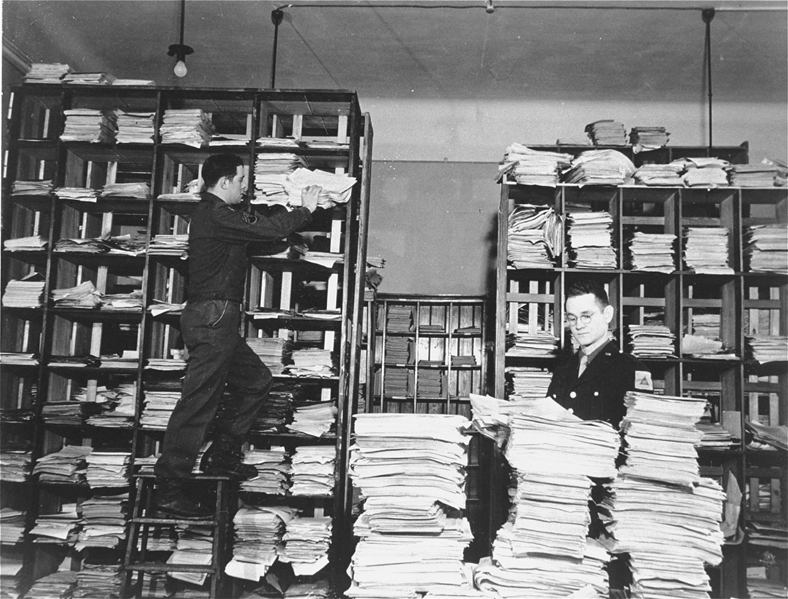 Wednesday of last week saw the deadline for filing official comments on the dreadful "plan" the Texas Commission on Environmental Quality has proposed to lower smog levels in DFW by 2018. In effect, the plan is to wait for federal gasoline changes in 2017 and hope for the best.
Wednesday of last week saw the deadline for filing official comments on the dreadful "plan" the Texas Commission on Environmental Quality has proposed to lower smog levels in DFW by 2018. In effect, the plan is to wait for federal gasoline changes in 2017 and hope for the best.
Shortly before closing time Wednesday, Downwinders at Risk and the Lone Star Chapter of the Sierra Club submitted 62 pages of criticisms concerning the plan. Not because either organization believes the TCEQ Commissioners will change heir minds, but because we're trying to establish a record that might eventually lead to a court challenge of the plan.
Although lengthy, the basic approach of the groups is two fold – call into question the state's computer modeling that's predicting success and challenge the state's exclusion of new pollution control measures on the Midlothian cement plants, East Texas Coal plants and Barnett Shale gas compressors.
Some of the highlights:
– The computer modeling the TCEQ is using for its new plan is the same it used for plans in 2006 and 2011, neither one of them successful at meeting its goal of cleaner air by the assigned deadline. In fact, the last clean air plan using this same model underestimated smog levels by almost 10 parts ber billion and actually saw a slight rise in smog at its conclusion – the first time a DFW plan ever resulted in higher ozone levels.
– In defiance of EPA guidance, the computer model TCEQ is using is more than five years old. EPA specifically recommends using an "ozone season" from 2009 to 2013. TCEQ's model is leftover from 2006, or three years older than the oldest year EPA says is appropriate.
– Also contrary to EPA rules, the TCEQ 2006 computer model ignores including the most relevant “meteorological conditions conducive to elevated air quality.” 2011 was the worst year for ozone levels in DFW since the beginning of this decade, in large part because it reflected the worst drought conditions. The three-year rolling average for the worst monitor, called the "design value" rose back up to 90 parts per billion after years of floating in the mid to upper 80's. But instead of using that year as a worst case baseline, the state defaulted to its 2006 model that doesn't incorporate the current drought.
– TCEQ's prediction of success is built on a series of unrealistic assumptions about the quantity of oil and gas pollution. For example, it underestimates the number and impact of air pollution from hundreds of large compressor stations and thousands of smaller "lift" compressors as the Barnett Shale ages. Fully 60 to 70% of all air pollution from the gas industry comes from these kinds fo facilities, so a mistake in estimating their impact could have a large chain reaction at downwind air quality monitoring sites in Tarrant, Denton, Parker and Johnson counties.
TCEQ also assumes that production levels in the Barnett will fall steeply. If they do not, there could be hundreds of tons more air pollution from the industry annually than what TCEQ assumes in its model.
That's important because the model predicts that the region will only barely squeak-by the 75 ppb standard required by 2018, with levels coming in at 75.87 at the Denton monitor site, 75.15 at Eagle Mountain Lake, and 75.04 in Grapevine. A jump in oil and gas pollution – or any other surge in pollution from any other source – could make those numbers obsolete and ruin our chances fo complying with the Clean Air Act on time…again.
– TCEQ's "Contingency Measures" are illegal. Every smog plan must have a series of quantifiable back-up contingency pans in case the options the plan relies on fail to achieve success. In this case, the state is only relying on unquantified and voluntary actions, such as "incentive" programs, the effectiveness of which cannot be measured. Since you can't measure them, you can't count them.
– TCEQ failed to consider all "reasonably available control technologies" and "measures." Nearly 40 pages is devoted to the wrong-headed, irrational, and illegal way TCEQ rejects off-the-shelf air pollution controls for the Midlothian cement plants, East Texas coal plants, and large gas compressors.
Under the Clean Air Act, a state's plan “shall provide for the implementation of all reasonably available control measures as expeditiously as practicable (including such reductions in emissions from existing sources in the area as may be obtained through the adoption, at a minimum, of reasonably available control technology) and shall provide for attainment of the national primary ambient air quality standards.” In order for the EPA to determine whether an area has provided for implementation as "expeditiously as practicable,” the State "must explain why the selected implementation schedule is the earliest schedule based on the specific circumstances of that area. Such claims cannot be general claims that more time is needed but rather should be specifically grounded in evidence of economic or technologic infeasibility.”
Step-by-step, Downwinders and the Sierra Club explains why Selective Catalytic Reduction (SCR) is a reasonable control technology for the Midlothian cement plants and East Texas coal plants. Even as the owners of one of the Midlothian cement plants applies for a permit to install the technology, TCEQ is claiming its still not ready for prime time. The groups demonstrate how requiring SCR on these major polluters would have a large impact on DFW ozone levels.
The same level of absurdity if reveled in TCEQ's rejection of electrification of gas compressors. Despite being able to significantly lower smog-pollution in the very areas where its needed most, and despite electrification even being required by many Barnett shale municipalities, the state maintains that this option is unrealistic and unachievable.
There's probably no better compendium of the various sins committed by the TCEQ plan than these comments. If you're looking for the most solid case for compressor electrification, or SCR adaptation, or just TCEQ malfeasance, this is your one-stop shop.
You may think this is a technical document, or one full of legal mumbo-jumbo. It's not, at least not for the most part. Instead it's the kind of logical, evidenced case you'd assemble for a debate with the TCEQ. It's a blow-by-blow comprehensive look at why the state isn't any more likely to meet this clean air deadline than it has any other. A case we hope is capable of persuading EPA to reject the TCEQ plan.
Five Minute Highlight Reel from Thursday’s News Conference at the EPA Ozone Hearing
https://www.youtube.com/watch?v=KdACG2-KWPk&feature=youtu.be
Citizens Clean Air Posse Swearing-In. Check
Doctors speaking out. Check
Cute kids. Check
Concerned Mothers. Check
Info on how you can still make comments to EPA in support of a lower ozone standard. Check
Both Gas Industry Spinmeister and Mansfield Compressor Spew During Thursday’s EPA Hearing
 There was at least one truth uttered by Steve Everley, the professional PR spokesperson for Energy in Depth, itself the PR arm of the Gas Industry, during his testimony at last Thursday's EPA ozone standard hearing in Arlington:
There was at least one truth uttered by Steve Everley, the professional PR spokesperson for Energy in Depth, itself the PR arm of the Gas Industry, during his testimony at last Thursday's EPA ozone standard hearing in Arlington:
"…natural gas producers will be significantly impacted by EPA’s proposal to reduce the National Ambient Air Quality Standard for ozone from 75 parts per billion to between 65 and 70 ppb."
Indeed. At the rate things are going in Austin and DC, it might be the only thing to impact the industry's large emissions of pollution for many years to come. Left unsaid by Everley was why the industry would be impacted by such a lower ozone standard – because in many parts of the country now, including the DFW area, smog-forming pollution from the gas industry is contributing significantly to higher ozone levels.
Even the governmental affairs branch of the gas industry, otherwise known as the Texas Commission on Environmental Quality, admits that facilities like compressors, storage tanks, pipelines, and de-hydrators found by the thousands in the western part of the Metromess contribute more smog-forming Volatile Organic Compounds (VOCs) than all the "on-road" vehicles in North Texas combined. This is true not only at the present time, but will be true at least three years into the future, according to TCEQ's own estimates.
Gas facilities also account for the third largest source of smog-forming Nitrogen Oxide pollution in DFW, according to TCEQ numbers included in their recent air plan submitted to EPA – only a ton per day less than all "non-road" vehicles in North Texas like construction equipment, and well ahead of "point sources" like the Midlothian cement kilns and local power plants.
In all, TCEQ predicts that 35,335 tons per year of smog-forming pollution will still be coming from the region's gas industry in 2018. That's a lot. It's so much that, as the TCEQ also demonstrates with its computer modeling, even a tweak here and there in gas pollution estimates can make big differences in the levels of ozone at monitors in places like Denton and Keller and Eagle Mountain Lake – traditionally the worst-performing air quality monitors in North Texas.
And that's why a lower ozone standard is a threat to the industry. The very air quality monitors the industry affects most with its pollution are the ones driving the region's high smog levels. Lowering the ozone standard means it would have to spend money to reduce those emissions significantly. It means it would have to spend money to prevent the kind of huge "accidental" releases of smog-forming pollution released by the Mansfield compressor on Thursday even while Steve Everley was testifying to EPA.
After giving her own testimony to EPA on Thursday morning, Earthworks' Sharon Wilson and Mansfield Gas Well Awareness board member Lance Irwin headed out to the Summit Midstream Partners Compressor Station behind Mansfield's Performing Arts Center, with an infrared, or FLIR "thermal imaging" camera. Such a device is capable of recording the kinds of VOC emissions that are often smelled and inhaled by surrounding residents, but can't be seen with the naked eye.
The Summit compressor and the two nearby Eagleridge gas wells have been the scene of many different complaints from the surrounding Mansfield neighborhood – everything from airborne foam landing in backyards to oily deposits landing on car finishes. On Thursday, Wilson and Irwin were responding to a new series of complaints about awful smells. When they showed up, what the two recorded was a massive "emergency blowdown" (versus the "planned" kind). While filming the event, Wilson suffered health effects familiar to gas facility neighbors and was overwhelmed by the obvious hydrocarbon fumes. Once you see her video, you understand why:
Such a blowdown was exactly what Lance Irwin had warned the Mansfield City Council about only three days before, during comments directed at slowing down or denying the permit for a new compressor, 34 wells, 12 tanks and a assortment of other facilities at an Edge pad site near Debbie Lane in town. He pointed out that industry and government estimates about emissions never take these kind of catastrophic events into account – form a short-term toxic exposure perspective, or as it turns out, from an air quality, smog-creating perspective. And he's right.
In this regard, these kinds of accidents are no different than the infamous industrial "burps" from refineries and chemical plants along the Houston Ship Channel that lead to smog spikes downwind. There are 650 large compressor stations in the DFW "non-attainment" area. How many are experiencing blowdowns on any given day? How many are affecting ozone levels in the spring and summer? The TCEQ estimates included in its DFW air plan don't even try to quanify them.
Because gas facilities like compressors are subject only to "standard permits," are located diffusely around a region, and don't officially emit a de minimus amount of air pollution, they're not subject to the federal rule of off-setting. That's when a new polluting facility locates in an already smoggy area like DFW and has to pay to cut smog pollution elsewhere if it wants to emit the stuff itself. If a new cement plant or power plant were to locate in DFW, it would have to pay to reduce a ton and a half of smog-forming pollution for every ton it wanted to release. Gas facilities don't have to do this – even though collectively they emit more smog-forming pollution than all the cement plants and power plant in the non-attainment area!
EPA has tried to argue that a company's different facilities are all tied together and should be counted as a single source, and so subject to off-setting regulations. But the courts have ruled against them.
Rising gas industry pollution and the absence of any official brake on its growth like off-setting is a large reason, maybe the primary reason, why DFW hasn't seen the kind of air quality progress it should have by now. Until this last summer's cooler and wetter weather gave us relief, ozone levels had been stagnating or even rising since 2009 – or about the time the industry invaded North Texas in large numbers. There's no question that had the Barnett Shale boom not happened, we'd have much cleaner air by now.
But it did and we don't. And so that's why a lower ozone standard is perhaps the only way that the gas industry will ever be forced to clean-up its act – especially on the widespread regional level we require to get to safe and legal air. Just like it has with the Midlothian cement plants, the need for lower smog levels can force the state's and industry's to act to add controls. It's a long-term fight, but one of the only paths to across-the-board change versus the city-by-city slog activists have had to rely on.
National Resources Defense Council lawyer John Walke has a great takedown of Steve Everley's spin on Thursday. And the tireless cross-country DeSmogblog reporter and photographer Julie Dermansky has a good read on the Mansfield fight that you should check out. But the most compelling rebuttal to both industry PR and local governments who want to ignore their own responsibility in this mess is probably Wilson and Irwin's two and a half minutes of video.
EPA Hearing Afternoon Delights: Medical Panel and Another Posse Swearing-in
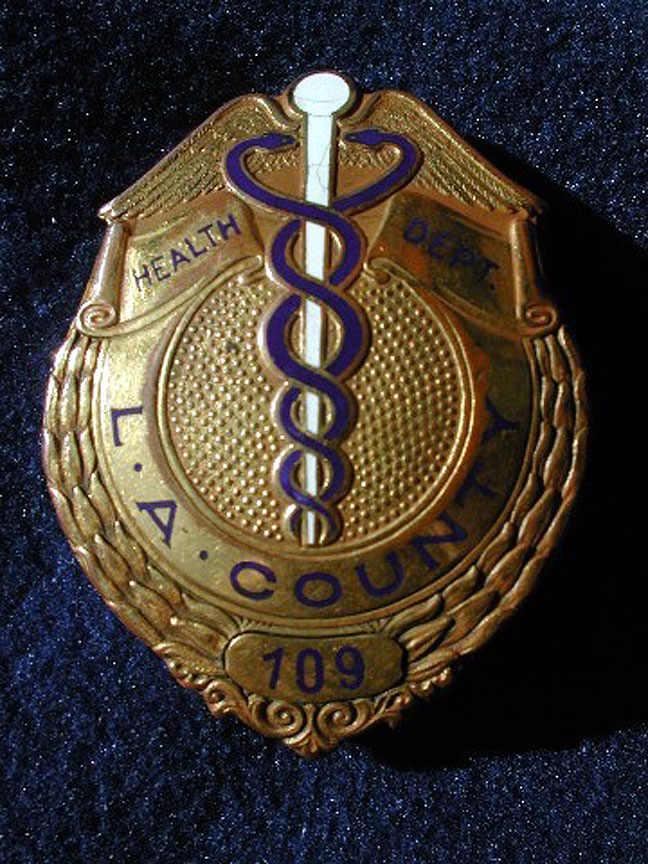 There's still some five-minute speaking slots available for Thursday's all-day EPA National public hearing at Arlington City Hall on a new ozone standard – mostly in the afternoon and evening. So if you haven't signed up yet, please do so. The EPA staffers will stay as long as there are people who want to testify. So if you get off work and want to come over and speak out at the last minute – you can. Some of you may remember the 2009 national cement plant hearing where we had almost 100 speakers and kept things going until 8:30 pm. We need to repeat that performance.
There's still some five-minute speaking slots available for Thursday's all-day EPA National public hearing at Arlington City Hall on a new ozone standard – mostly in the afternoon and evening. So if you haven't signed up yet, please do so. The EPA staffers will stay as long as there are people who want to testify. So if you get off work and want to come over and speak out at the last minute – you can. Some of you may remember the 2009 national cement plant hearing where we had almost 100 speakers and kept things going until 8:30 pm. We need to repeat that performance.
To sign-up today, e-mail EPA staffer Eloise Shepard at shepherd.eloise@epa.gov… Or just show up on Thursday in Arlington and grab an open slot.
As an added bonus and attraction, there's a special feature in at the end of the scheduled lunch break that may provide an incentive to attend. At 1:45 pm Downwinders will be sponsoring another mass swearing-in of its Citizens Clean Air Posse, complete with official badges. Because this is a national hearing, the original DFW-centric language from the earlier TCEQ hearing has been slightly re-written to read as follows:
As a member of the Clean Air Posse I pledge to do my duty to uphold the federal Clean Air Act and take responsibility to provide cleaner air to my fellow citizens – especially since the State of Texas doesn’t seem to give a damn anymore.
I pledge to help persuade the federal marshals at the EPA to make the State of Texas follow the law and provide safe and legal air to breathe.
I pledge to bring an end to the reign of lawlessness and disregard for public health, and the Clean Air Act, by the State of Texas, so help me God.
Membership in the posse entitles you to be your own Clean Air Act enforcer and make citizens' arrests of violators. It also allows you to join other members in organized round-ups to cajole and harass federal officials to do their job. Plus, you get to wear a nice-looking shiny badge while you're doing all of the above. But you don't get a badge unless you show up.
Immediately following the Posse swearing-in at 2 pm will be a panel presentation by at least three physicians coming to testify at the hearing. Because regardless of the politics involved in the decision to lower the federal smog standard, this is still a public health issue, one about how poisons in the air cause illness and disease among millions of Americans.
Dr. Susan Pacheo of the University of Texas Health Science Center in Houston specializes in Pediatric Allergy and Immunology and will speak to the threat posed by smog to children's health. Dr. John Kissel specializes in Internal Medicine in St. Louis, Missouri to discuss the impacts of smog of public health in general. DFW's own Dr. Robert Haley is a toxicologist at UT-Southwestern, and led last year's effort by the Dallas County Medical Society to close the oldest, dirtiest East Texas coal plants that affect North Texas air quality. He'll be speaking about the local impacts of smog on the air you breathe.
This is the closest thing to a rally for clean air as DFW has seen in some time, so please come out and be a supporter if you can make it. EPA needs to receive the very strong message that the public wants safe and legal air to breathe – especially in states like Texas that will never pursue that goal on its own. Your presence at the hearing tomorrow is a direct rebuke to the Texas Commission on Environmental Quality, Governor Greg Abbott, and every other Texas elected and regulatory official who takes the position that our air is just fine the way it is. Don't give them aid and comfort by sitting this one out. Show up and add your voice to those saying that Austin doesn't represent us in this battle.
Mansfield Update: The Little Group That Just Did
 Something strange happened on the way to losing the battle in order to win the war. The battle was won. At least for now.
Something strange happened on the way to losing the battle in order to win the war. The battle was won. At least for now.
It wasn't a permit denial. It wasn't a ban. It wasn't even a new ordinance. But the Mansfield Gas Well Awareness group pulled off their first significant victory at the council level Monday night when a third and final reading of a new 34 multi-well pad site, plus compressor, plus storage tanks, plus dehydrators, plus re-boilers, plus separators, gas-industrial-complex that seemed like a done deal only 30 days ago was unanimously tabled until new rules for drilling in the city are put in place later this year.
Edge Resources' original Special Use Permit, acquired in 2008 (before the passage of the current gas drilling ordinance with its 600-foot setbacks), and hosting 2 current wells, had expired over a year ago. Yet instead of going back through the Planning and Zoning Commission and applying for a new SUP, the company pursued an unusual side deal with the city council that would allow "renewal" of the site permit with the two wells, plus permission for an additional 34 wells, a compressor, and a lot of other facilities only 3-400 feet from current homes – in exchange for setting-aside some acreage next to this gasland extravaganza for "parkland." How could the council refuse?
Moreover, unpublicized negotiations for this swap were going on even as the council met on December 3rd to begin "an open dialogue" with the MGWA group at a special workshop to initiate a new gas drilling ordinance, including a request for a new setback of at least 1500 feet. No mention was made that night by any city official that the massive Edge Resources site reauthorization that undermined that request was in play. The first time residents learned about it was when it appeared on the council agenda the very next day for a "first reading,"re: approval.
Two weeks ago, the permit came up for a "second reading" and residents rallied. This time there was some news coverage and new opponents showed up at City Hall to speak against the renewal while a new ordinance was being considered. With gas prices at historic lows, the question was repeatedly asked, "What's the rush?"
In the glare of the spotlight for the first time, council members now sought new assurances from the company that the nice slide show about site development they were seeing actually represented what the city would be getting. Instead, all the company would say was that that level of industry best practices "could be deployed." With emissions from the proposed wells estimated at up to 13 tons per year alone, this was of more than passing interest to residents. City council members might have thought they heard real commitments, or maybe just pretended to hear them. Either way, the stage was set for final approval at the third reading at the end of the month.
Even though they were protesting the permit, Mansfield group members were so used to seeing their concerns discounted by an unresponsive council that they had no hope of actually stopping or delaying it. Still, they trudged on, wanting to turn this fight into an example of what was wrong with the current ordinance and get some mileage out of certain defeat. Lose the battle, win the war. They passed out fliers in surrounding neighborhoods, they met with individual council members, they sent out social media alerts. They put themselves in a position to be lucky, just in case.
On Monday night, more allies of the group came to City Hall for the third and final reading of the gas permit, along with opponents of a new medical waste transfer and sterilization facility that wants to set up in town. Now the council had a new problem. On the one hand it had a history of punting to the state over health concerns about drilling. Austin had the "experts" and the experts had claimed it was OK. On the other hand, those same Austin experts had now claimed the very, very unpopular newly-proposed medical waste facility was hunky-dory as well. What to do?
Getting tough in front of the crowd, the Council pressed Edge for promises it would abide by all provisions of a new gas ordinance save any new setback requirements (since the new wells would be even closer than the current 600 foot setback normally allows). Edge countered with a carefully and lawyerly-crafted statement that left them an out to such a promise, seemingly in contrast to what the company had committed to only two weeks earlier – but only if you weren't listening. Remember, those state-of-the-art practices "could be" deployed – not necessarily had to be.
It became painfully clear why the city needs all operators and all wells to adhere to a routine SUP process instead of working side deals on its own behind closed doors. Even so, last year such a permit request would have sailed through the council. This year, the organizing done by the Mansfield Gas Well Awareness Group made it harder for business as usual to take place. Much, much harder.
The Mayor and council members signaled their frustration over the lack of a clear yes or no commitment from Edge to go along with a new ordinance. After recessing into executive session and giving the company's lawyers almost an hour to work up the nerve to approve conditional acceptance, the council came back and still confronted the same kind of wiggle-room language they were trying to avoid. As a result, the "done deal" got undone at the last possible minute, and the council voted unanimously to table the third and final reading of the permit renewal until after adoption of a new gas drilling ordinance. For the first time in two years, Mansfield residents got what they had asked for when it came to a gas well permit.
It's only a delay. And the stubbornness of Edge's lawyers is as responsible as any thing else for the win. And the really big war over a new ordinance is about to start with most of the council seemingly unwilling to retreat from a "Fort Worth model" 600-foot setback. But better to start such a war with an unexpected victory in battle than a routine loss, plus a lesson about what can be accomplished if you work hard enough to be lucky.
Why DFW Residents Should Speak in Favor of a Lower Smog Standard at Thursday’s EPA Public Hearing in Arlington

All Day NATIONAL Public Hearing on a New Federal Ozone Standard
Thursday, January 29th, 9am to 7:30 pm
Arlington City Hall, 101 W. Abram
There are only three national public hearings on the possibility of lowering the national federal ozone, or smog, standard. One is in Washington DC, another is in Sacramento, California and the third is right here in Arlington, Texas. We need everyone that can come and speak for 5 minutes on the importance of cleaner air to do so. You know industry and elected officials hostile to the EPA and the Clean AIr Act will be well-represented
To secure your 5-minute speaking slot, e-mail Eloise Shepard and ask for one in the time period during the day on Thursday most convenient for you. Please do it asap: shepherd.eloise@epa.gov.
There are at least two very good reasons why North Texas residents should support a new lower smog standard of 60 parts per billion – the lowest standard under consideration by the EPA.
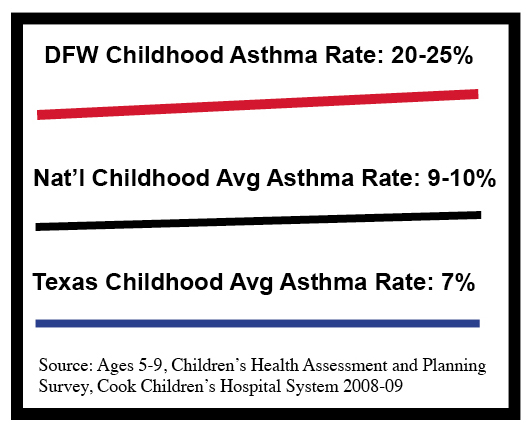 1. DFW has Epidemic Childhood Asthma Rates
1. DFW has Epidemic Childhood Asthma Rates
According to a first-of-its kind survey in 2008 by Cook Children’s Hospital, one out of every four DFW children ages 5-9 suffered from asthma. That was more than twice the national average, and more than three times the average for the state of Texas. Asthma is the most common cause of missed school days and is one of most common causes of Emergency Room visits and hospitalizations.
The DFW Hospital Council estimates nearly 1500 children in Dallas County visited an emergency room or were admitted to a hospital due to asthma in 2012. Dallas County has the highest number of child asthma hospitalization in the state.
According to EPA itself, a new 60 parts per billion (ppb) standard for ozone would eliminate roughly 1.8 million asthma attacks, 1.9 million missed school days, and 6,400 premature deaths nationwide – 95% of all ozone-related deaths. Few regions would benefit more from such a lower ozone standard than DFW.
2. It’s One of the Few Ways to Force Reductions in Harmful Air Pollution in Texas 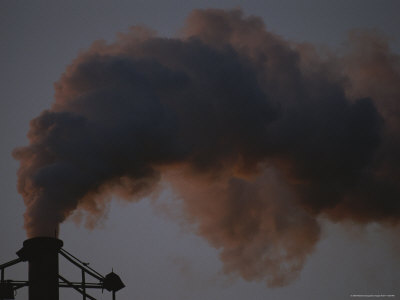
Texas is a place where industry rides rough shod over state regulators and citizens don’t have a level playing field to seek relief from the adverse health consequences of air pollution. Tougher federal ozone standards are one of the only ways to reduce air pollution from large local sources like the cement kilns in Midlothian, gas facilities in the Barnett Shale, and coal plants in East Texas.
Lower federal ozone standards over the last two decades, combined with grassroots campaigns have resulted in the lower volumes of smog pollution from the Midlothian cement kilns, plus reductions in other kinds of harmful pollution from the kilns as well, like particulate matter, and carcinogens. A new 60 ppb ozone standard would mean the kilns would have to add state-of-the-art controls to bring down those totals even more – to as much as 90% reductions. The same is true with the East Texas coal plants and with polluting gas facilities. To get down to 60 ppb ozone levels in DFW could mean deep cuts from the largest sources of industrial air pollution in North Texas. Something that probably won’t happen without a new, lower federal ozone standard.
And that won't happen without a lot of you showing up on Thursday to say you want and need cleaner air to breathe. Reserve your 5-minute speaking slot now. It's a good investment if you live in Texas.
Don’t put away those gas masks yet: EPA’s National Ozone Public Hearing is Next Thursday in Arlington
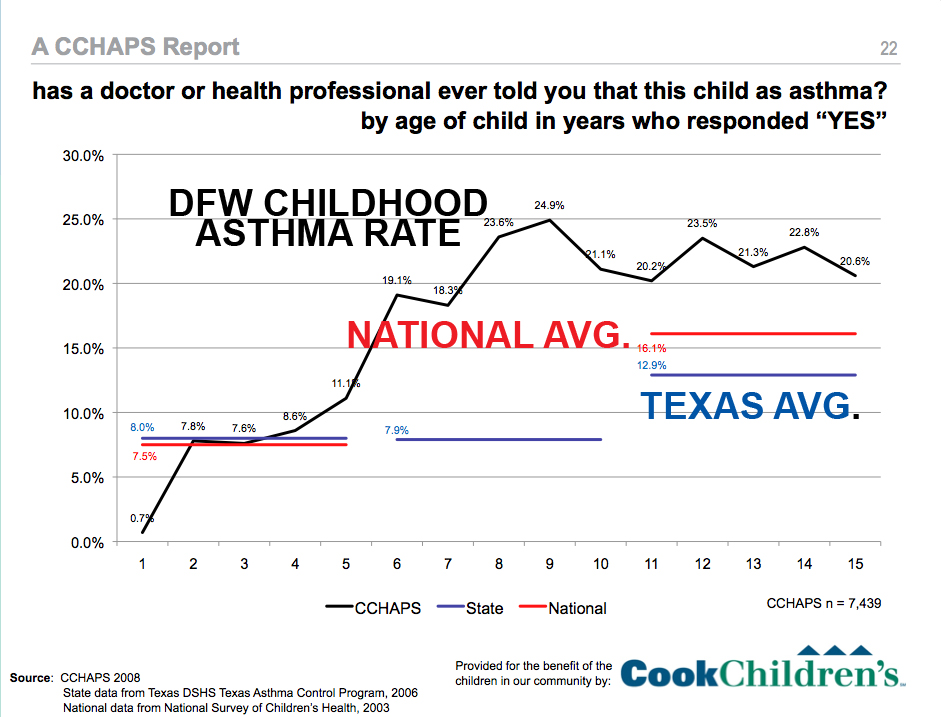
All Day NATIONAL Public Hearing on a New Federal Ozone Standard
Thursday, January 29th, 9am to 7:30 pm
Arlington City Hall, 101 W. Abram
(To secure a 3-minute speaking slot, e-mail Eloise Shepard and ask for one in the time period most convenient for you. Slots are going fast (and not necessarily to citizens), so do it asap: shepherd.eloise@epa.gov)
It's Round Two of January's clean air public hearing marathon, and the biggest has been saved until last.
One of only three national public hearings on lowering the federal ozone, or smog standard, is taking place here in DFW, at Arlington City Hall all day next Thursday January 29th, from 9 am to 7:30 pm.
Last week saw a state-sponsored hearing on another TCEQ do-nothing DFW clean air plan. But the state wouldn't even have to pay lip service to such plans were it not for the requirement to meet a federal ozone level and the region's inability to do so over the last two decades.
Lowering the federal ozone level means it will be tougher in the future for the state to claim it doesn't have to implement any new pollution controls on cement kilns, coal plants, or gas facilities. More importantly, enforcement of a tougher standard means better public health: fewer "bad air days," fewer asthma attacks, fewer trips to the emergency room because your child can't breath, and fewer deaths caused by dirty air.
That's important because reports like the child heath survey from Cook Children's hospital in 2009 showed that childhood asthma rates in DFW were twice the state average and almost 10% higher than the national average. It called the prevalence of asthma among local children an "epidemic."
Currently, the national ozone standard is 75 parts per billion (ppb) – which DFW is still at least three years away from reaching even under the rosiest of scenarios. (Right now our average is 81 ppb, and that's only because of a wetter and cooler summer in 2014). But that 75 ppb number is a political compromise – not one grounded in science. Based on public health studies the EPA's own independent board of specialists has recommended a range of 60 to 70 ppb at least three times since 2008, with an emphasis on the lower end of that range. Now it looks as if the EPA is finally willing to follow through on that recommendation.
EPA's national ozone standard sets the goal of cleaner air that every state must work toward. It drives all new clean air plans. like the one the state of Texas is proposing for DFW right now. The lower the standard, the more pollution has to be reduced. The more pollution has to be reduced, the more controls have to be added to major sources of air pollution to get that reduction. That's how you get long-term clean air progress in states like Texas that refuse to act on their own.
A significant reduction in the federal standard – from 75 (ppb) to as low as 60 ppb would make it much, much harder for Texas to avoid new controls on industry. To give you some idea of how much harder, consider that the state's "plan" for compliance with the current 75 ppb level is completely dependent on a new EPA gasoline mix coming onto the market in 2017. Even then, it's own estimates say that it won't get down below 75 at least three or four monitoring sites. Just one monitor site out of compliance means the whole region is in violation. Short of a huge rise in the use of electric cars, more huge decreases in vehicle pollution aren't expected. Additional significant drops in smog that would be required under a new, lower standard would have to include controls on major industrial sources – like the cement kilns, coal plant and, yes even gas facilities.
When you have a much lower ozone standard, you have to reduce smog by addressing ALL sources of air pollution.
Finding a way to comply with a lower national ozone standard is how more modern pollution controls were mandated almost a decade ago at the Midlothian cement plants. Meeting that new ozone standard meant pollution from the kilns had to be reduced and that made it more possible for Downwinders' "Green Cement" campaign to work with local governments. Today, there are no obsolete "wet kilns" left in Texas – they've all been replaced with more modern dry kiln operations. This has resulted in a reduction of hundreds, even thousands, of tons of smog-forming air pollution from these huge sources every year. We still have to require state-of-the-art Selective Calaytic Reduction (SCR) on the kilns, but they're releasing far less pollution than they were even five years ago because they've had to comply with a new federal ozone level.
With a new, lower ozone standard, the same could be true of new controls on gas facilities, like the 650 large compressors in North Texas, and the East Texas coal plants. That's why it's important for Texas residents to fight for the lowest possible standard this time around. When you testify, please make sure you request a new standard of NOT MORE THAN 60 PARTS PER BILLION.
According to a recent EPA staff analysis, an ozone standard of 60 ppb would reduce asthma deaths in the US by 95%, compared to only a 50% reduction under a 70 ppb level. If you want air that can eliminate all but a small fraction of respiratory problems associated with outdoor pollution, you need to press for a 60 ppb standard.
Needless to say industry is fighting back hard against such a standard, using its usual doom and gloom forecasts of economic hardship. This is the same argument that was used against the current ozone standard – the one we have now in the middle of the biggest economic boom in a decade. In fact, the technology for bringing down pollution levels currently exists in many industries – including kilns, coal plants and compressors. It's not experimental and it's not too expensive to use, as demonstrated by its use right now in those industries. We just have to require its use in states like Texas that are refusing to implement progress. That's why this new standard is so important – it will make the state take action it would not otherwise take. It's one of the only ways citizens who care about cleaner air in Texas can force progress.
Likewise, the Texas Commission on Environmental Quality's own toxicologist, Michael "Smog Ain't Bad For You" Honeycutt will also be testifying. TCEQ knows that a lower standard will force its hand on new controls. It will be pulling out all the stops to use its influence and that of sympathetic elected officials to scuttle any change. Using ideologically-based arguments supported by industry-financed studies, the TCEQ will say there are no real benefits to reducing DFW smog. Those of you that know better have to show up and say so.
Speaking slots for the 29th are going very fast. Industry will be well-represented. Please don't get left out. We need your voice that day to call for a 60 ppb national ozone standard. E-mail the EPA at shepherd.eloise@epa.gov and reserve your time today.
Bottom Line: If You Think DFW Still Has A Smog Problem, Be in Arlington Tonight
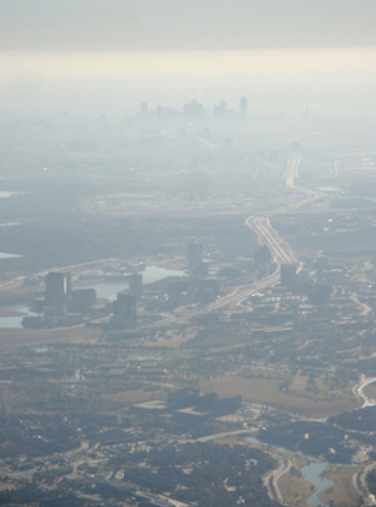 You don't have to have any special technical knowledge. You don't have to know regulatory or legal jargon. You just have to believe we still have a problem with smog in Dallas-Fort Worth. That's all it takes to participate in the air quality extravaganza happening tonight in Arlington. It's a rare two-for one chance to help the fight for cleaner air.
You don't have to have any special technical knowledge. You don't have to know regulatory or legal jargon. You just have to believe we still have a problem with smog in Dallas-Fort Worth. That's all it takes to participate in the air quality extravaganza happening tonight in Arlington. It's a rare two-for one chance to help the fight for cleaner air.
Public Hearing on the State's New DFW Air Plan 6:30 pm Tonight, Arlington City Hall, 101. W Abram
All you have to do is sign-up to speak, wait for your name to be called, and tell the state and the EPA representatives who'll be present that you want something better than a clean air plan that does nothing to get cleaner air except wait for a new federal gasoline formula to hit the market a year before the plan's deadline. The more people that do this, the more pressure EPA is under to reject this terrible state plan. Nothing fancy. Just show up and say you want better – that this region deserves better after two decades of being in violation of the Clean Air Act.
Click here to send prepared written comments to the state and EPA. You can add your own as well.
Roasting and Toasting of Retiring State Representative Lon Burnam – A Fundraiser for Downwinders at Risk, 7:30 -10 pm, Tonight, South Street Patio, 400 South Street – about four blocks east of Arlington City Hall
If you think DFW smog is still a problem, after you say your piece at the state hearing come and support the only group committed to trying making its elimination a priority – Downwinders at Risk. Since the mid-1990's we've been using these air plans to raise issues, get information, and sometimes even win victories that actually do lead to cleaner air. A big reason there's no more burning of hazardous waste in the Midlothian cement plants, and all of those cement plants have upgraded their equipment is because of the work we did around smog. Lately, we've been using them to drive home how much gas and oil pollution contribute to regional smog.
But we need your help – in terms of attendance at public hearings, and in terms of financial assistance. For your donation of $35 to this roasting and toasting of Lon, you get an evening of entertainment and take part in a salute to a real local clean air hero. And you make it more possible to keep challenging the status quo on behalf of your lungs.
CLICK HERE TO GET YOUR TICKETS ONLINE OR GET THEM AT THE DOOR TONIGHT
If you still think we have a smog problem, there's two things you can do about it tonight. Thanks.
Citizens To Form Posse, Demand State Enforce the Clean Air Act at Thursday Hearing on New DFW Air Plan
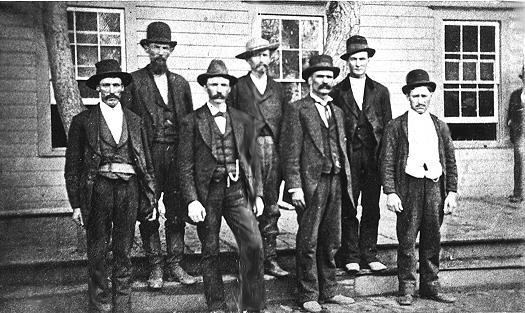 (Arlington) Critics of a new plan to clean the air in Dallas-Ft. Worth are using a public hearing on Thursday evening to accuse the state of Texas of breaking the law by not requiring the implementation of pollution control technologies already in widespread use to help lower smog levels in North Texas.
(Arlington) Critics of a new plan to clean the air in Dallas-Ft. Worth are using a public hearing on Thursday evening to accuse the state of Texas of breaking the law by not requiring the implementation of pollution control technologies already in widespread use to help lower smog levels in North Texas.
“We’re asking residents to come out and get sworn into a citizens posse to help us make the state follow the Clean Air Act,” said Jim Schermbeck, Director of the local clean air group Downwinders at risk, one of the leading opponents of he new plan. “Austin is going to ridiculous, Monty Python-like lengths to avoid new controls on the Midlothian cement plants, East Texas coal plants, and local gas facilities in this new plan – even though those controls are now commonplace in each industry.”
Thursday’s public hearing centers on a new plan to comply with the federal ozone standard of 75 parts per billion (ppb) by 2018. DFW has never achieved such a low level of smog, and only this last year dipped below the 1997 standard of 85 ppb for the first time with the help of cooler, wetter summer.
EPA says a state plan like the one the Texas Commission on Environmental Quality is proposing for DFW must include “all Reasonable Available Control Technologies,” and “all Reasonable Available Control Measures” to get lower smog levels as “expeditiously as possible.” EPA defines these as technologies as ones that are “technically and economically feasible.” But according to Schermbeck, the state of Texas is deliberately ruling out local use of pollution controls already adopted by industry that could speed cleaner air.
He cited three examples. Selective Catalytic Reduction, or SCR acts much like the catalyst on cars, only on a much larger scale for industrial plants. It’s already in use on at least half a dozen European cement plants where it’s reduced smog-forming pollution by up to 90%, and on many coal-fired power plants across the world and in the US, where it achieves the same results. Yet the TCEQ DFW air plan doesn’t require SCR on the largest single sources of smog pollution in the region, the Midlothian cement plants, or the East Texas coal plants that are known to impact DFW air quality, saying the technology isn’t “feasible.” TCEQ maintains this stance even though the Holcim cement plant in Midlothian has announced plans to include an SCR unit on one of its own kilns.
“Here’s a pollution control technology already in operation and achieving great results, with a cement plant in North Texas already adopting it, but the state’s position is that it isn’t ‘feasible’. It’d be comical if it wasn’t delaying cleaner air for over 6 million people that haven’t had it in decades.”
Besides ignoring SCR on cement and coal plants, Schermbeck said the TCEQ has also ruled-out electrification of large gas compressors as “infeasible” – despite the widespread use of electric compressors In the Barnett Shale already and the requirement of municipalities like Dallas and Southlake to allow nothing but electric compressors within their city limits. According to a 2012 study by the Houston Advance Research Consortium, compressors could increase downwind ozone levels as much as 3 to 10 parts per billion. There are at least 647 large compressors in the DFW “non-attainment area” covered by the TCEQ air plan.
“Requiring just these three technologies that are already on the market and being used in their respective industries could reduce air pollution by thousands of tons a year and help us achieve compliance with the new federal ozone standard much quicker,“ said Schermbeck. He said they all pass the test of being feasible according to EPA definitions. “By law, they should be required.”
Instead, the state is relying exclusively on a new federal gasoline mix being introduced in 2017 to achieve the required 75 ppb standard by 2018. Although it’s expected to help lower ozone levels across the country, it won’t get DFW down to the level of 75 ppb alone. To make the plan work on paper, the state has had to estimate oil and gas pollution downward in a way Schermbeck and others claim is unrealistic.
“Basically, the state’s approach is to do absolutely nothing for the next three years and hope the federal gasoline change brings it “close enough” to the lower standard. But hope is not a plan.”
Schermbeck said his group would be passing out badges to members of their clean air posse and recruiting residents to persuade the EPA to reject the state’s proposal. The federal agency has the final say. But there’s also always court – where many clean air rules for the state of Texas have been decided over the last 20 years. “If government won’t enforce the law, we may have to do it ourselves.”
